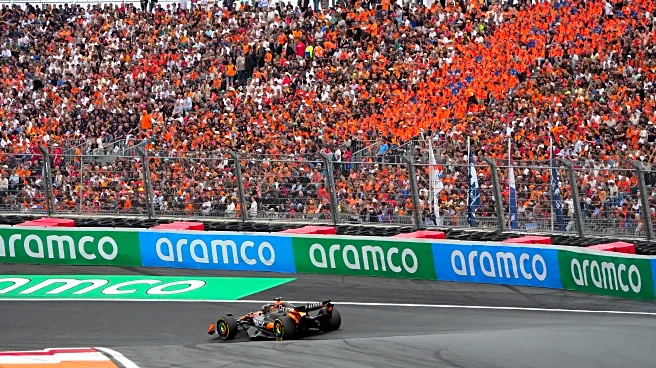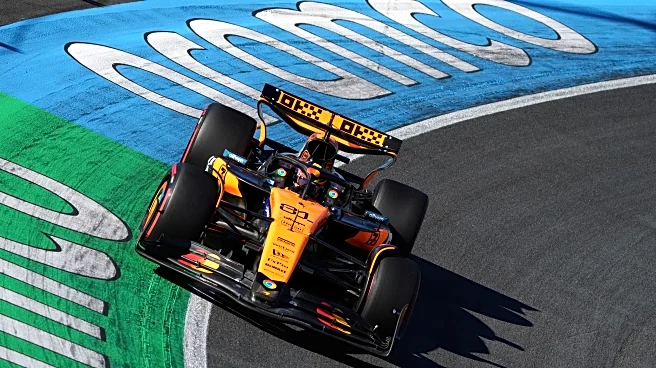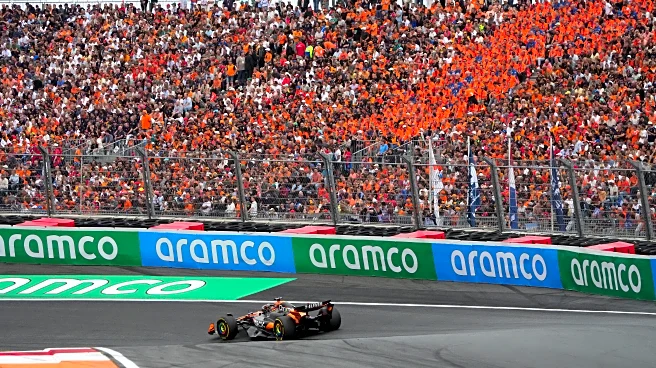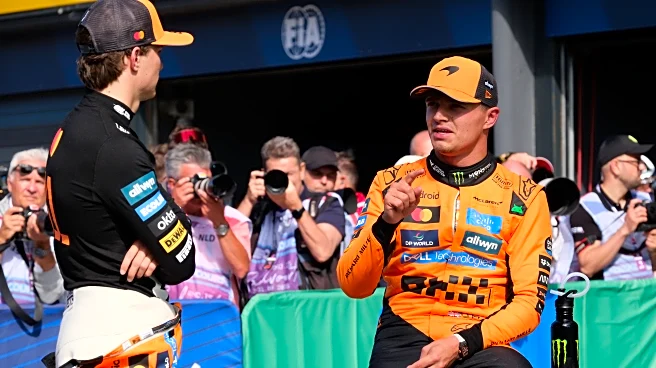What's Happening?
Isack Hadjar, a rookie driver for the Racing Bulls team, secured his first Formula 1 podium finish at the Dutch Grand Prix held in Zandvoort. Starting fourth on the grid, Hadjar capitalized on the late retirement of McLaren's Lando Norris to finish third, trailing behind Oscar Piastri and Max Verstappen. This achievement marks a significant turnaround for Hadjar, who faced a challenging debut at the Australian Grand Prix earlier in the season. During that race, he crashed on the formation lap, leading to doubts about his future in the sport. However, his performance in Zandvoort demonstrated his resilience and ability to compete with top-tier teams like McLaren, Ferrari, Red Bull, and Mercedes.
Why It's Important?
Hadjar's podium finish is significant as it highlights the potential for new talent to disrupt the established order in Formula 1, traditionally dominated by a few top teams. His success not only boosts his confidence but also underscores the competitive nature of the sport, where unexpected outcomes can occur. For Racing Bulls, Hadjar's performance is a testament to their strategic decisions and investment in nurturing young talent. This development could influence team dynamics and driver line-ups in future seasons, as teams may look to replicate Racing Bulls' approach to integrating rookies into their line-ups.
What's Next?
Following his impressive performance, Hadjar is likely to gain increased attention from both fans and other teams. His ability to maintain competitive pace against seasoned drivers suggests that he could be a strong contender in upcoming races. Racing Bulls may also consider leveraging Hadjar's success to further develop their car and strategy, aiming for consistent podium finishes. Additionally, other teams might reassess their scouting and development programs to identify and support emerging talents capable of challenging the status quo in Formula 1.
Beyond the Headlines
Hadjar's journey from a difficult debut to a podium finish also highlights the psychological resilience required in high-pressure sports. His ability to recover from setbacks and perform at a high level could serve as an inspiration for other young athletes facing similar challenges. Moreover, the support he received from figures like Anthony Hamilton underscores the importance of mentorship and guidance in nurturing new talent in competitive environments.












